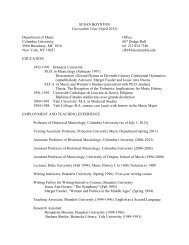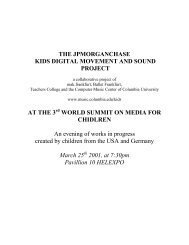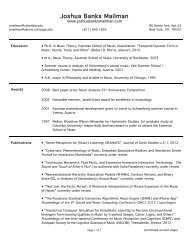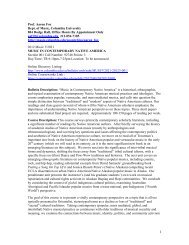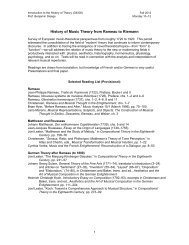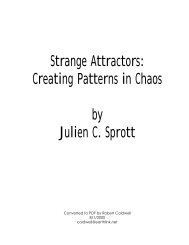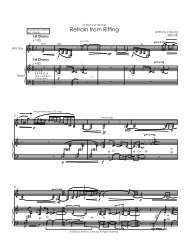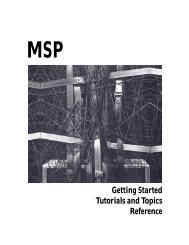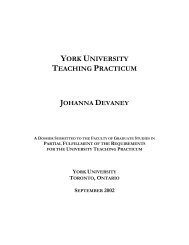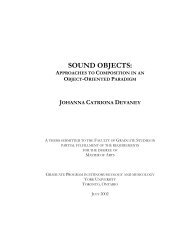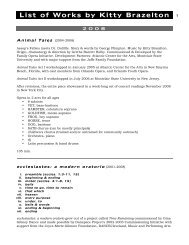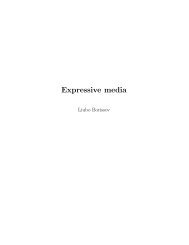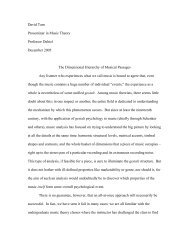Text, including the two scores - Columbia University Department of ...
Text, including the two scores - Columbia University Department of ...
Text, including the two scores - Columbia University Department of ...
Create successful ePaper yourself
Turn your PDF publications into a flip-book with our unique Google optimized e-Paper software.
statement, thus intertwining <strong>the</strong> notion <strong>of</strong> abstraction between <strong>the</strong> mental formulation and <strong>the</strong> mechanical instantiation. In <strong>the</strong> concert works, I see <strong>the</strong> relationships between <strong>the</strong> three media as an extension <strong>of</strong> this navigation among computational layers; <strong>the</strong> geological unambiguous<br />
<strong>of</strong> <strong>the</strong> piece’s development begins at low levels <strong>of</strong> s<strong>of</strong>tware construction, upon which associations and forms are made, until we build up to <strong>the</strong> top level <strong>of</strong> <strong>the</strong> piece. My lower-level development described in section 1 was intended to generate material at <strong>the</strong> local level <strong>of</strong> a composition (discrete sound record<br />
phrases <strong>of</strong> notes, instantaneous 3D video shapes); <strong>the</strong>se materials are <strong>the</strong>n treated like any o<strong>the</strong>r raw material for (human) composition. I am samples,<br />
subconsciously guided by a vague notion <strong>of</strong> computational aes<strong>the</strong>tics (and a general desire to show <strong>of</strong>f <strong>the</strong> range <strong>of</strong> capabilities <strong>of</strong> a tool or process), but <strong>the</strong> qualities or features <strong>of</strong> <strong>the</strong> s<strong>of</strong>tware-created material do not necessarily determine <strong>the</strong> concepts <strong>of</strong> <strong>the</strong>ir higher-level combinations, nor <strong>the</strong> large-scale certainly<br />
In section 2, I debated whe<strong>the</strong>r <strong>the</strong> local-level constructions and correlations <strong>of</strong> a synchronized intermedia work should be explained at <strong>the</strong> start <strong>of</strong> a piece through a step-by-step progression from simpler to more form.<br />
relations. Yet that question itself builds upon a much larger question: is it easier for an audience to grasp a newly composed system <strong>of</strong> correlations complex<br />
between synchronized disparate media, or between performer gesture and result) at lower layers <strong>of</strong> abstraction? We recognize, without training or explanation, obvious low-level correlations: push a button and a sound is made, or start a sound and a visual element appears. But at <strong>the</strong> (individually<br />
(ei<strong>the</strong>r<br />
58



